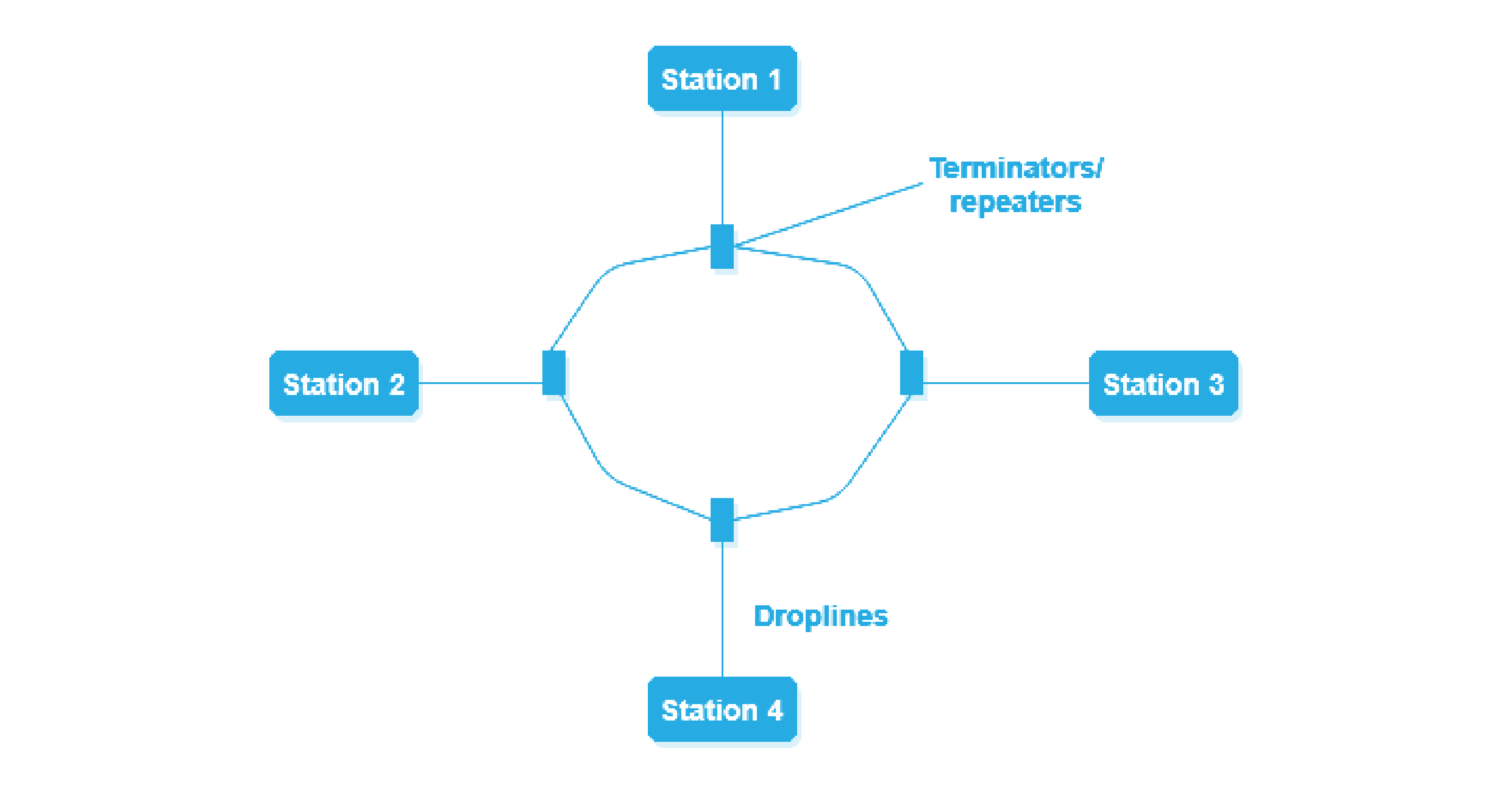In computer networking, network topology refers to the physical or logical arrangement of devices and connections in a network. One such topology is the ring topology, where network devices are connected in a closed loop. In this article, we will delve into the advantages and disadvantages of ring topology, examining its strengths and weaknesses in terms of performance, scalability, fault tolerance, and management.
What is Ring Topology?
Ring topology is a closed loop network where devices are connected in a circle. Data travels unidirectionally, offering simplicity and efficient transfer. However, it has a single point of failure and limited scalability.
Advantages of Ring Topology
Some advantages of Ring Topology are discussed below:
Simplicity and Easy Installation
One of the significant advantages of a ring topology is its simplicity. Setting up a ring network is relatively straightforward, as it involves connecting each device to its neighboring devices in a circular manner. This simplicity makes it easier to install and configure, saving time and effort during network deployment.
Efficient Data Transfer
In a ring topology, data flows in a unidirectional manner around the ring. Each device receives data from its preceding device, processes it if necessary, and passes it along to the next device. This sequential data transfer eliminates the chances of data collisions, resulting in more efficient and reliable communication within the network.
Reduced Network Congestion
Since data flows in a predetermined path in a ring topology, the chances of network congestion are relatively low compared to other topologies like bus or star. This is because each device in the network has dedicated access to the network medium, ensuring smoother data transmission and reducing the likelihood of bottlenecks.
Cost-Effectiveness
Ring topologies often require less cabling compared to other complex topologies like mesh or stars. This can result in cost savings, especially for larger networks. Additionally, the absence of a central switch or hub in a ring topology further reduces equipment costs, making it an attractive option for budget-conscious organizations.
Disadvantages of Ring Topology
Disadvantages of Ring Topology are given Below:
Single Point of Failure
One of the significant drawbacks of a ring topology is its vulnerability to a single point of failure. If any device or connection in the ring fails, it can disrupt the entire network. Unlike other topologies where multiple paths exist, a broken connection in a ring can lead to network isolation or downtime until the issue is resolved.
Limited Scalability
Ring topologies can pose challenges when it comes to network expansion. Adding new devices to an existing ring network requires physically connecting them between two existing devices, which can be impractical or disruptive. As a result, scaling a ring network to accommodate a growing number of devices may be more complex compared to other topologies.
Slower Data Transmission with Increased Devices
As the number of devices in a ring network increases, the time taken for data to circulate around the ring can also increase. Each device on the ring needs to process and relay the data, introducing additional latency. This can impact the overall network performance, particularly in larger networks with numerous devices.
Difficulty in Network Troubleshooting
Identifying and troubleshooting faults in a ring topology can be challenging. The closed-loop structure makes it harder to pinpoint the exact location of a fault or failure. Diagnosing and resolving issues, such as a broken connection or a malfunctioning device, can require meticulous inspection and testing, potentially leading to longer network downtime.
Ring Topology Advantages and Disadvantages
Conclusion
Ring topology offers simplicity, efficient data transfer, reduced network congestion, and cost-effectiveness. However, it also has limitations such as the potential for a single point of failure, limited scalability, slower data transmission with increased devices, and difficulty in network troubleshooting. Before implementing a ring topology, it is crucial to consider the specific requirements of the network, the number of devices, and the level of fault tolerance needed. By carefully weighing the advantages and disadvantages, network administrators can make informed decisions to ensure optimal performance and reliability in their network infrastructure.
Frequently Asked Questions (FAQs)
Q1. Can a ring network operate if one device fails?
In a traditional ring topology, the failure of a single device can disrupt the entire network. However, some modern ring networks incorporate redundancy mechanisms, such as dual-ring or self-healing features, which enable the network to continue functioning even if one device fails.
Q2. Is it possible to add new devices to an existing ring network?
Expanding a ring network can be challenging as it requires physically connecting the new device between two existing devices. This process may cause network downtime during the installation and can be more complex compared to other topologies like Star or Bus.
Q3. What happens if there is a break or interruption in the ring?
In the event of a physical break or interruption in the ring, the entire network can be affected. Data transmission ceases, causing network downtime until the break is located and repaired. It is crucial to have mechanisms in place to quickly identify and resolve such issues.
Q4. Can a ring network handle high data traffic?
Ring topology may face limitations in handling high data traffic, particularly as the number of devices and data volume increase. The sequential nature of data transmission can result in increased latency and slower data transfer rates compared to other topologies designed for high-speed communication.
Q5. How can I troubleshoot problems in a ring network?
Troubleshooting a ring network can be challenging due to the closed-loop structure. Identifying faults or failures requires a thorough inspection of each device and connection. Specialized tools, network analyzers, or protocols like OAM (Operations, Administration, and Maintenance) can help in diagnosing and resolving issues.





